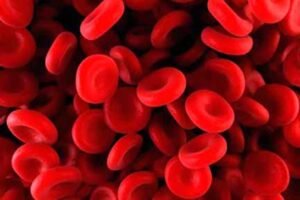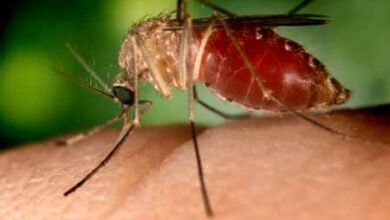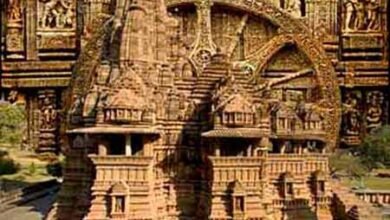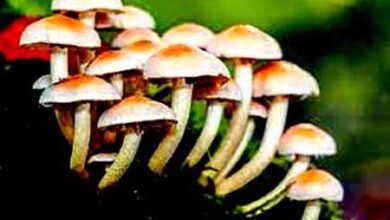
Education
Related to Biology – 151.
- The number of bones in the human body is 206 and the number of ribs is 24.
- 8 bones are found in the human skull (Cranial bones).
- The smallest body bone is the stapes (ear bone).
- The largest bone of the body is the femur (thigh bone).
- The strongest bone in the body is the Femur.
- In humans, 12 pairs of cranial nerves and 31 pairs of spinal nerves are found.
- The number of salivary glands in humans is three pairs.
- Changes in urea of ammonia occur in the liver.
- The liver plays an important role in urea formation. The liver is an excretory organ.
- Mumps disease occurs in humans due to parotid gland infection (bloating).
- Gastric juice comes out of the stomach.
- A chemical called indole and scatole causes a foul odour in the stool.
- Insulin is produced in the human pancreas.
- The largest digestive gland in the body is the liver.
- Digestive food is converted into faeces in the large bowel/intestine.
- An inorganic substance that helps to keep bones and teeth healthy is fluorine.
- The colour of urine is yellow due to Urochrome.
- The thyroid gland is found in the throat.
- The body’s water weight is 65 – 80%.
- Maltose converts sugars into glucose.
- Carbohydrate provides energy to the body.
- One gram of fat produces 9.3 kcal of energy.
- The blood takes 23 seconds to circulate the body.
- Control of all mental functions is in the cerebrum (front part of the brain).
- Control of normal voluntary actions such as walking, and speaking is in the cerebellum (the back of the brain).
- The Cerebrum is the largest part of the human brain.
- Blood is a simple connective tissue.
- The function of blood is to transport oxygen from the lungs to all parts of the body and to bring carbon dioxide from parts of the body to the lungs.
- Blood is an alkaline solution; its pH value is 7.4.
- The amount of blood in the human body is about 7 to 8% of the body weight.
Dr. (Prof.) Amarendra Kumar
========== ========= ===========
जीव विज्ञान से संबंधित– 151.

- मनुष्य के शरीर मे हड्डियों की संख्या 206 तथा पसलियों की संख्या 24 होती है.
- मनुष्य की खोपडी मे 8 हड्डियां पायी जाती हैं.
- शरीर के सबसे छोटी हड्डी स्टेप्स (कान की हड्डी) होती है.
- शरीर की सबसे बड़ी हड्डी फीमर (जांघ की हड्डी) होती है.
- शरीर की सबसे मजबूत हड्डी जांघ की हड्डी फीमर होती है.
- मनुष्य मे 12 जोड़ी कपाल तंत्रिकाएं और 31 जोड़ी मेरूरज्जु तंत्रिकाएं पायी जाती हैं.
- मनुष्य मे लार ग्रंथियों की संख्या तीन जोड़ी होती है.
- अमोनिया का यूरिया मे परिवर्तन यकृत मे होता है.
- यकृत यूरिया निर्माण मे महत्वपूर्ण भूमिका निभाता है | यकृत एक उत्सर्जी अंग है.
- पैरोटिड ग्रंथि में संक्रमण होने (फूलने) से मनुष्य में गलसुआ रोग हो जाता है.
- जठर रस आमाशय से निकलता है.
- मल मे बदबू इंडोल तथा स्कैटोल नामक रसायन के कारण होती है.
- मनुष्य के अग्नयाशय मे इंसुलिन का निर्माण होता है.
- शरीर की सबसे बड़ी पाचक ग्रंथि यकृत है.
- वृहद आंत्र मे अपचा भोजन मल के रूप मे बदलता है.
- हड्डियों एवं दातों को स्वस्थ रखने में सहायक अकार्बनिक पदार्थ फ्लुओरीन होता है.
- मूत्र का रंग पीला यूरोक्रोम के कारण होता है.
- थाइराइड ग्रंथि गले में पायी जाती है.
- शरीर मे जल का भार 65 – 80% होता है.
- मल्टोज शर्करा को ग्लूकोज में बदलता है.
- कार्बोहाइड्रेट शरीर को ऊर्जा प्रदान करती है.
- एक ग्राम बसा से 3 किलो कैलोरी ऊर्जा उत्पन्न होती है.
- शरीर मे रक्त परिभ्रमण मे 23 सेकेण्ड का समय लगता है.
- सभी मानसिक क्रियाओं का नियंत्रण प्रमस्तिष्क (मस्तिष्क के अगले भाग) में होता है.
- सामान्य ऐच्छिक क्रियाओं जैसे- चलना-फिरना, बोलना का नियंत्रण अनुमस्तिष्क (मस्तिष्क के पिछले भाग) मे होता है .
- मनुष्य के मस्तिष्क का सबसे बड़ा भाग प्रमस्तिष्क होता है.
- रक्त एक सरल संयोजी ऊतक है.
- रूधिर का कार्य आक्सीजन को फेफड़ों से शरीर के सभी भागों में पहुंचाना तथा कार्बन डाई आक्साइड को शरीर के भागों से फेफड़े तक लाना है.
- रक्त एक क्षारीय विलयन है, इसका PH मान 4 होता है.
- मानव शरीर में रक्त की मात्रा शरीर के भार का लगभग 7 से 8% तक होती है.
डॉ, (प्रो.) अमरेंद्र कुमार.





